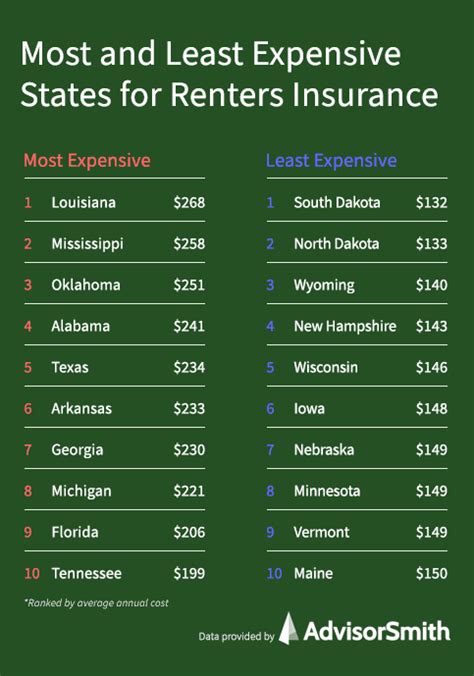Married Filing Separately Health Insurance Penalty

The concept of Married Filing Separately health insurance and its potential implications on tax penalties is a topic that requires a comprehensive understanding of the tax system and healthcare regulations. This article aims to delve into the intricacies of this filing status, exploring its advantages, disadvantages, and the potential health insurance-related penalties that individuals might face.
Understanding the Married Filing Separately Status

Filing taxes as Married Filing Separately is a unique tax filing status that allows each spouse to report their income, deductions, and credits separately, as if they were single. This status offers a level of financial independence to married couples, particularly those with complex financial situations or varying income levels.
One of the key considerations for this filing status is health insurance. The Affordable Care Act (ACA) introduced certain provisions regarding health insurance coverage and tax penalties, which can impact individuals filing separately. Understanding these implications is crucial for anyone considering this tax strategy.
Advantages of Married Filing Separately
The Married Filing Separately status can offer several benefits to couples, especially when it comes to tax planning. Some of the advantages include:
- Income and Deduction Flexibility: Each spouse can claim their own deductions, credits, and income, which can be advantageous for couples with varying financial circumstances.
- Protection of Assets: In certain situations, this filing status can protect the assets of one spouse from the liabilities or debts of the other.
- Strategic Tax Planning: Couples can optimize their tax liabilities by distributing deductions and credits between them, potentially reducing their overall tax burden.
Disadvantages and Potential Penalties
While the Married Filing Separately status has its advantages, it also comes with some drawbacks and potential penalties, particularly when it comes to health insurance.
- Higher Tax Rates: In some cases, filing separately can result in higher tax rates, especially if one spouse has significantly higher income than the other.
- Loss of Tax Benefits: Certain tax credits and deductions, such as the Child Tax Credit or Earned Income Tax Credit, may be limited or unavailable when filing separately.
- Health Insurance Penalties: This is where the Married Filing Separately status can become complex. Under the Affordable Care Act, individuals who do not have qualifying health insurance coverage may face a tax penalty. When married couples file separately, each spouse's income is considered individually for the purposes of this penalty, which can lead to unexpected consequences.
Health Insurance Penalties for Married Filing Separately

The Affordable Care Act (ACA) introduced the Individual Mandate, which required most individuals to have qualifying health insurance coverage or face a tax penalty. This mandate was in effect from 2014 to 2018, and while it was repealed for tax years after 2018, some states have implemented their own mandates. Understanding how this penalty applies to Married Filing Separately couples is crucial.
The Individual Mandate and Married Filing Separately
Under the Individual Mandate, individuals who did not have qualifying health insurance coverage were subject to a tax penalty. This penalty was calculated as a percentage of their household income or a flat dollar amount, whichever was higher. When couples file separately, each spouse’s income is considered separately for the purposes of this penalty.
For example, let's consider a married couple where one spouse earns $80,000 and the other earns $40,000. If they file jointly, their household income would be $120,000. However, if they file separately, each spouse's income is considered individually, resulting in two separate penalty calculations.
This can lead to situations where one spouse is eligible for a subsidy or exemption, while the other is not. As a result, the couple may face a higher overall penalty when filing separately compared to filing jointly.
Calculating the Penalty
The penalty for not having qualifying health insurance coverage was calculated as follows:
- For tax years 2014 to 2016: The penalty was the greater of a flat dollar amount or a percentage of household income.
- For tax year 2017: The flat dollar amount was increased to $695 per person, or 2.5% of household income, whichever was higher.
- For tax year 2018: The penalty was set at $0, meaning there was no longer a federal tax penalty for not having health insurance coverage.
When filing separately, each spouse's penalty is calculated based on their individual income and coverage status. This can result in a complex calculation, especially for couples with varying income levels and health insurance situations.
Exemptions and Subsidies
The ACA also provided exemptions and subsidies to help individuals and families obtain health insurance coverage. These exemptions and subsidies were based on household income and family size. When filing separately, each spouse’s income is considered individually for the purposes of these calculations.
This can lead to situations where one spouse is eligible for a subsidy or exemption, while the other is not. As a result, couples may need to carefully consider their filing status and health insurance coverage to ensure they are maximizing their benefits and minimizing any potential penalties.
| Tax Year | Penalty Calculation |
|---|---|
| 2014-2016 | Greater of a flat dollar amount or a percentage of household income. |
| 2017 | $695 per person or 2.5% of household income, whichever is higher. |
| 2018 | No federal tax penalty. |

Maximizing Benefits and Avoiding Penalties
To maximize benefits and avoid potential health insurance penalties when filing separately, couples can consider the following strategies:
- Review Income and Coverage: Carefully assess each spouse's income and health insurance coverage. Ensure that both spouses have qualifying health insurance coverage to avoid penalties.
- Explore Subsidies and Exemptions: Understand the eligibility criteria for subsidies and exemptions under the ACA. Each spouse's income and coverage status may affect their eligibility, so it's important to review these options separately.
- Consider Joint Filing: In some cases, filing jointly may be more beneficial, especially if one spouse has significantly higher income or if both spouses have similar income levels. Joint filing can often result in a lower overall tax burden and penalty calculation.
- Stay Informed: Keep up-to-date with the latest tax laws and healthcare regulations. Changes in the tax code or healthcare policies can impact the Married Filing Separately status and its implications on health insurance penalties.
Conclusion
The Married Filing Separately status offers a level of financial independence and strategic tax planning opportunities for married couples. However, when it comes to health insurance and potential penalties, this filing status can become complex. Understanding the implications of the Individual Mandate and the calculation of penalties is crucial for couples considering this filing strategy.
By carefully reviewing their income, coverage, and eligibility for subsidies or exemptions, couples can make informed decisions about their tax filing status and health insurance coverage. Consulting with tax professionals and staying informed about the latest regulations can help individuals navigate these complexities and make the most advantageous choices for their financial and healthcare needs.
What is the difference between filing taxes as Married Filing Jointly and Married Filing Separately?
+When filing taxes as Married Filing Jointly, both spouses combine their income, deductions, and credits on a single tax return. This can often result in a lower overall tax burden. On the other hand, Married Filing Separately allows each spouse to file their own tax return, treating them as if they were single. This status offers financial independence but may result in higher tax rates or penalties in certain situations.
Are there any advantages to filing taxes as Married Filing Separately?
+Yes, there can be advantages to filing taxes separately. This status can offer income and deduction flexibility, especially for couples with varying financial circumstances. It can also protect the assets of one spouse from the liabilities or debts of the other. Additionally, strategic tax planning can be beneficial, as couples can distribute deductions and credits to optimize their tax liabilities.
What is the Individual Mandate, and how does it affect Married Filing Separately couples?
+The Individual Mandate, part of the Affordable Care Act, required most individuals to have qualifying health insurance coverage or face a tax penalty. When couples file taxes separately, each spouse’s income is considered individually for the purposes of this penalty. This can lead to situations where one spouse is subject to a higher penalty than if they had filed jointly.



